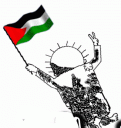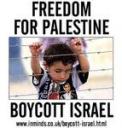 "If you entrench yourself behind strong fortifications, you compel the enemy to seek a solution elsewhere."
"If you entrench yourself behind strong fortifications, you compel the enemy to seek a solution elsewhere."
CLAUSEWITZ
The Berlin Wall:
The Berlin Wall was erected in the night of August 13, 1961. It was a weekend and most Berliners slept while the East German government begun to close the border. In the early morning of that Sunday most of the first work was done: the border to West Berlin was closed. The East German troups had begun to tear up streets and to install barbed wire entanglement and fences through Berlin.
The Barlev Line:
The world said the supposedly impregnable Barlev Line, on the east shore of the Suez Canal and the sand berms backed up by pipelines of fuel to rurn the canal into a flaming sea could not be breached except by a nuclear weapon. Lulled into complacency like the WWII French Maginot line, the Israelis were caught by surprise when the Egyptians used water cannon to pierce the sand walls.
The Maginot Line:
The Maginot Line was a powerful line of defense against German invasion of France, which stretched from Switzerland to the Ardennes in the North, and from the Alps to the Mediterranean in the South. It was a vast, dynamic, state-of-the-art, ultra-modern defensive system. Most of its components were underground, where interconnecting tunnels stretched for kilometers, and where, beneath the earth, thousands of men slept, trained, watched, and waited for a war that never came.
And now, the Wall in Palestine:
Israel began building the wall, which enjoys support across the Israeli political spectrum, in summer 2002. The first section of the wall, currently underway, will be an estimated 225 miles long upon completion. Israel has also proposed constructing a second wall in the east, near the Jordan valley. Consisting of some barbed wire sections, in places the wall is solid concrete, towering 25 feet above the ground.
Once finished, the western portion of the wall alone will be three times as long and twice as high as the Berlin wall. If completed as proposed, the wall will encircle the majority of the Palestinian population in two large blocs, covering around 45 percent of the West Bank's territory. Israel will control entry and exit points.
Despite Israel's security justification, the wall is not being built on, or in most cases, even near, Israel's border with the West Bank. Because the wall is located inside the West Bank, will incorporate most of the Israeli settlement population and leave large areas of the West Bank under Israeli control, many critics believe that the wall has more to do with Israel's territorial ambitions.
Confiscating Palestinian land and building Israeli-only settlements has not brought Israel security. Nor will this wall. It is, however, increasing frustration and hopelessness among Palestinians, who are being separated from one another and cut off from their main sources of livelihood: agricultural lands and water resources.
The wall curves like a snake through the West Bank, including fertile Palestinian agricultural land and water wells on one side of the wall, while leaving Palestinian farmers on the other side, with no access to their fields. In April 2003, over 3,500 acres of Palestinian land had been razed for the path of the wall and 100,000 agricultural trees uprooted. Around 35 groundwater wells are located on land to be confiscated for the first phase of construction, with another 14 threatened for demolition.
In urban areas, the wall will prevent future development with 1.56 million Palestinians trapped inside an area approximately 1,000 square acres in size. Several towns in the northern West Bank are already being slowly strangled by the noose of a wall that encloses them on three sides.
Palestinians are not the only ones concerned. National Security Adviser Condoleezza Rice told Israeli Prime Minister Ariel Sharon that the enormous concrete barrier is "problematic." Rice expressed concern that Israel is building the de facto border of the future Palestinian state, in advance of border negotiations slated for the final phase of the road map process.
Today, Palestinians are using the wall to express theselves artistically. But tomorrow, another day shall come and this wall, just like the impenetrable lines of Maginot, Berlin and Barlev crumbled, shall come down.















